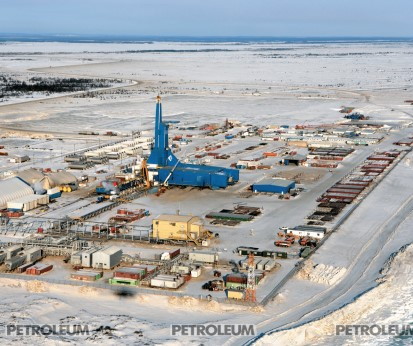Exclusive
KAZENERGY’s Forecasts
Late last year, KAZENERGY Association published its National Energy Report-2013, which presented an analysis of the situation and of development prospects for the fuel and energy complex of Kazakhstan. According to the statement made by Asset Magauov, the General Director of the Association, the relevant ministries, scientific & research institutes, members of the Association and a number of consulting companies has been involved in Report preparation. The Report contains exclusive data, analyses and expert findings on the situation in the fuel and energy industry in Kazakhstan and abroad. According to Mr. Magauov, opinions of the World Energy Council, of the World Petroleum Council, as well as general global research and forecasts in the energy industry were taken into account in the preparation of the document.

KAZENERGY kindly made the Report available to Petroleum that presents the main components to its readers.
Despite the current forecasts of slowdown in the world's population growth rates, the authors of the report assume that there will be growth in the world energy demand. First of all, due to China and India, because in developed countries energy consumption has settled down. Insignificant increase in consumption in these countries is almost entirely offset by policies of energy saving and increase in energy efficiency. The most likely forecast for the world fuel balance in 2030 is as follows: oil, gas and coal will account for 75% to 85% of the total energy consumed in the world but the share of oil will be reduced in relation with the share of coal and gas. In 2013, the share of renewable energy sources in electricity production represented no more than 10%. The total capacity of nuclear power plants will grow about twofold.
Decrease of Oil Production Volume after 2025
Under those circumstances, a decrease in oil production is expected in Kazakhstan beyond 2025. In the basic scenario of the industry development, based on the implementation of Phase 2 for Kashagan field development and on Tengizchevroil’s Future Growth Project, and without considering the development of new fields that are currently in early exploration phase or not yet discovered, the peak of oil production in the country is expected in 2025 (at the level of 106 million tons). After 2025 moderate decline in oil production is expected, and the projected national production in 2030 would be of 91.5 million tons.
Note, however, that developments in the industry after the work on the National Energy Report, and in the first place, another delay in the launch of commercial production at Kashagan by at least two years require adjustments to the forecast. Accurate forecasting of such basic markers as timing and amount of production at key fields of hydrocarbon raw materials is critical for the economy as a whole, because in forecasting several fundamental factors should be taken into account.
- Production of maximum amount of oil within the contract term is profitable for any investor, and this can, in some cases, negatively affect the efficiency of field development and the total quantities of oil production during the whole period of its development.
- Simultaneous implementation of large oil and gas projects at certain times greatly increases the demand for specialized equipment and technology, which could lead to higher prices for them even on a global scale, and as a result the State revenues from field development will be reduced.
- In a similar way one-time increase in demand for labour resources in certain professions, and as well a drastic reduction of it could lead to requirement to create a large number of additional jobs.
- The country's economy is unable to generate significant revenue from hydrocarbon exports, which would result in the need to sterilize low-yielding assets.
Thus, currently in Kazakhstan there is a need to determine optimal aggregate crude oil output and flow of revenue from its exports, on the basis of which the State should perform long-term planning regarding phasing and levels for each deposit development.




